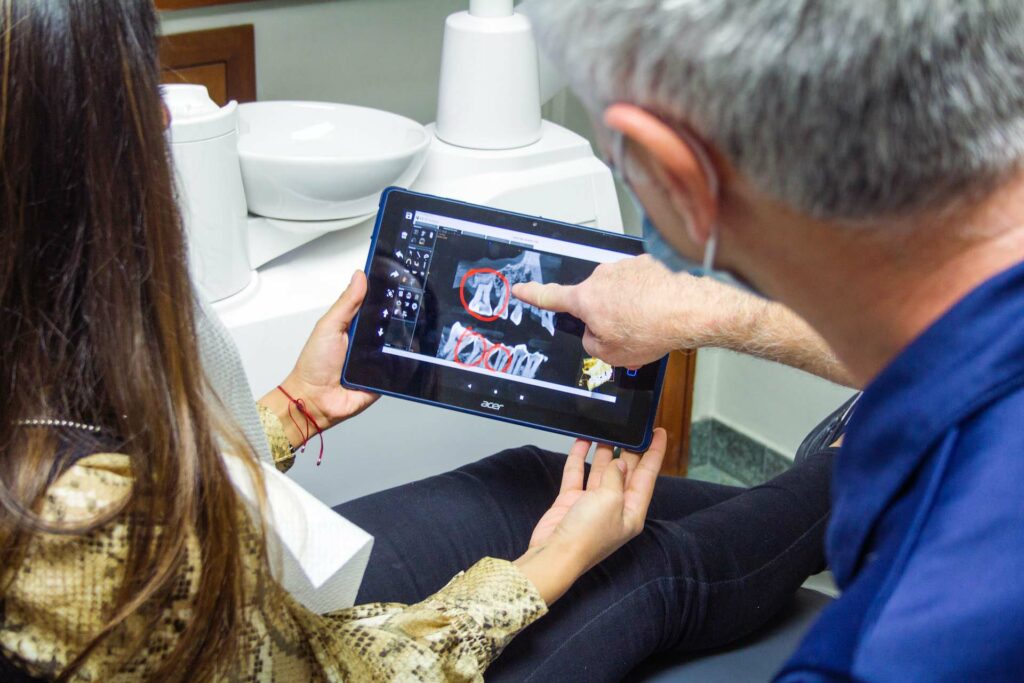Innovating Patient Experiences: User Experience Design and Patient-Centered Design

Patient-centered and user-experience designs have become increasingly important in the healthcare industry. The patient-centered plan prioritizes the requirements and preferences of patients, whereas user-experience (UX) design focuses on designing intuitive and user-friendly user journeys. Together, these two design methods assist healthcare organizations in enhancing patient satisfaction, clinical outcomes, patient safety, patient-provider communication, and collaboration.
Understanding Patient-Centered Design and User Experience
Patient-centered and user-experience designs share many principles, such as empathy, collaboration, and usability. In patient-centered design focuses on patients’ needs, preferences, and views. It entails collecting feedback from patients and healthcare providers to comprehend the difficulties patients confront inside the healthcare system. At the same time, UX design is the process of developing intuitive user journeys.
Healthcare practitioners can develop experiences personalized to patients’ requirements and preferences by incorporating patient feedback into the UX design process. Techniques such as patient-centered design and user experience design (UX design) are used to develop health platforms that are not only user-friendly but also offer patients with individualized healthcare information and services.
The Benefits of Patient-Centered Design and UX Design in Healthcare
Patient-centered design and user experience design can potentially improve the quality of patient care by facilitating the development of more engaging, efficient, and practical experiences. By involving patients in the design process, healthcare organizations may deliver experiences tailored to their customer’s needs and preferences. This may result in improved therapeutic outcomes, increased patient safety, increased patient happiness, and more patient engagement.
Improved Patient Satisfaction and Experience
User experience and patient-centered design may increase patient satisfaction by customizing encounters to meet patients’ needs and preferences. One example is MyChart, a safe online interface that lets consumers check their health information, make appointments, ask for medication refills, and connect with their healthcare professionals. In addition, healthcare businesses may improve patient experience, engagement, and treatment plan adherence by giving patients simple-to-use digital tools.
Another illustration would be telemedicine systems, which allow patients and healthcare professionals to communicate online. These platforms can benefit patients who have trouble getting to in-person visits, live in remote places with poor access to healthcare, or have mobility or transportation challenges. In addition, healthcare providers may improve patient happiness and experience and broaden access to care by letting patients get treatment in the convenience of their own homes.
Improved Clinical Outcomes
Designing more effective and efficient user experiences using patient-centered and UX design may also enhance therapeutic results. Patients can obtain quicker and more accurate diagnoses and treatments by simplifying the healthcare process, which may result in better health outcomes. For instance, patient access to healthcare information and resources may be facilitated using digital health platforms created using UX design principles, which can enhance patients’ overall health and well-being.
Improved Patient Safety
By designing user experiences less prone to mistakes and accidents, patient-centered design, and UX design may help increase patient safety. For example, UX design methodology can be used to design intuitive interfaces. Moreover, patient-centered design may provide soothing, less stressful environments in healthcare settings, lowering the chance of mistakes brought on by tension or anxiety.
Improved Communication and Collaboration Between Patients and Providers
Patient-centered design and UX design may improve communication and cooperation between patients and physicians by encouraging more transparent and cooperative experiences by providing patients with easy access to their medical records and treatment plans, for instance, by designing a digital health system that promotes simpler and more effective patient-provider communication.
Implementing Patient-Centered Design and UX Design in Healthcare

Implementing patient-centered and user experience design in healthcare requires a multidisciplinary approach combining collaboration between healthcare providers, designers, and patients. Here are some crucial measures for building patient-centered design and user experience design in the healthcare industry:
- Improved patient satisfaction and experience: By customizing healthcare encounters to patients’ needs and preferences, healthcare providers can increase patient satisfaction and experience. For instance, the VA Palo Alto Health Care System devised a patient-centered design plan involving patient and staff input for their new clinic. As a result, patients acknowledged better satisfaction with the clinic’s design, layout, and amenities.
- Improved clinical outcomes: Patient-centered and user experience designs can enhance clinical outcomes by providing more effective and efficient user experiences. For example, The Massachusetts General Hospital deployed a smartphone app that allowed patients to view their medical records, communicate with their care team, and provide feedback as part of their patient-centered design approach to inpatient treatment. As a result, the hospital observed a decline in the length of stay and readmissions and increased patient participation.
- Improved patient safety: Patient safety can be enhanced using patient-centered and UX designs. As an illustration, the Agency for Healthcare Research and Quality (AHRQ) developed a patient-centered toolbox for hospitals that featured design strategies to enhance patient safety, like clear signage and wayfinding, medication reconciliation, and patient education materials. Hospitals that used these techniques consequently witnessed a decline in unfavorable adverse events and medical errors.
- Improved communication and collaboration between patients and providers: Patient-centered design and user experience design can potentially improve communication and collaboration between patients and providers by developing experiences that are friendlier to users and more easily accessible. For instance, the University of California, San Francisco (UCSF) implemented a patient-centered design approach for their electronic health record (EHR) system. This approach included the creation of a patient portal that allowed patients to access their medical information, communicate with their care team, and schedule appointments online. As a direct consequence of this, the hospital observed a sizeable rise in the levels of patient participation as well as patient satisfaction with the EHR system.
Challenges and Considerations in Patient-Centered Design and UX Design
While patient-centered and UX design has many benefits, challenges, and considerations exist. These include:
- Resistance to change from staff and providers: Healthcare providers and staff may resist change, mainly if it requires significant changes to workflows or processes. Healthcare organizations should emphasize the importance of patient-centered care and provide training and support to help staff and providers adjust to new workflows and processes.
- Resource constraints: Implementing patient-centered design and UX design may require additional resources, such as time, money, and personnel. Healthcare organizations should carefully consider the costs and benefits of implementing these design approaches and prioritize projects with the most significant impact potential.
- Addressing issues of equity and access in patient-centered design: Patient-centered design and UX design may inadvertently exclude specific populations, such as those with limited access to digital health platforms. Healthcare organizations should consider the needs and preferences of all patient populations when implementing these design approaches.
- Ensuring patient privacy and data security: Patient-centered design and UX design may involve collecting and storing patient data, which raises concerns about patient privacy and data security. Healthcare organizations should implement robust security measures to protect patient data and ensure that patient privacy is always maintained.
The future of patient-centered design and user-experience (UX )design looks good. Here are some key areas to watch in the coming years:
- Personalization:
As patient-centeredness in healthcare rises, personalization will become more of a focus. As a result, digital platforms and tools will be tailored to the needs and preferences of patients, enabling more focused and effective care.
- Artificial intelligence (AI):
By automating repetitive tasks (reminders, scheduling, etc.), improving diagnosis and treatment, and enhancing the patient experience, AI has the potential to transform the healthcare sector completely. Chatbots can offer patients support, direction, and analytics that can help clinicians identify individuals who are at high risk.
- Virtual and Augmented Reality (VR/AR):
Immersive experiences made possible by VR and AR technologies can enhance patient education, communication, and adherence to treatment regimens. While augmented reality (AR) can give patients visual aids to comprehend better their diseases and treatments, virtual reality (VR) can simulate medical operations.
In conclusion, patient-centered and user-experience designs can completely change how healthcare is provided by allowing patients to access more individualized, effective, and enjoyable experiences. Despite certain apparent downsides, the healthcare business may undergo a significant transformation thanks to these design techniques.
Would you like us to assist you? Contact us at: info@areteworks.com (www.areteworks.com)
